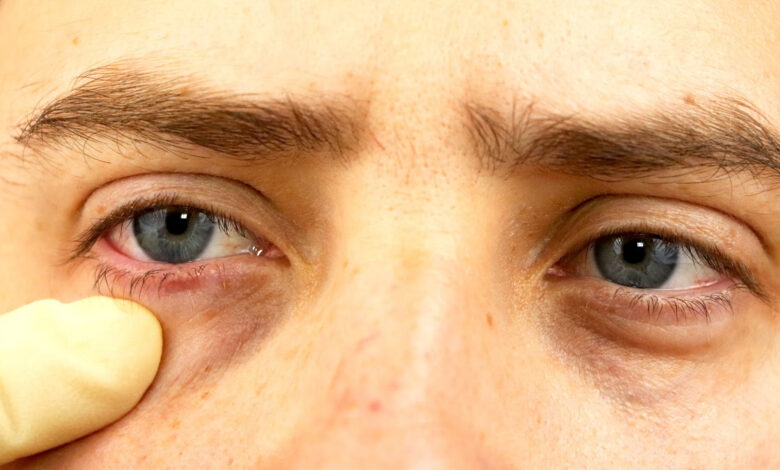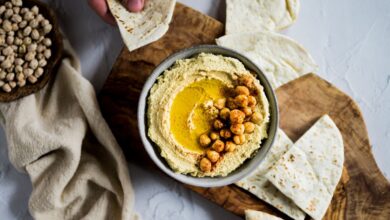The Art of Milialar: Exploring a Timeless Craft

Milialar, also known as milium cysts or milk spots, are small white or yellow bumps that commonly appear on the skin. While they are harmless, milia can be a nuisance for those seeking smooth and clear skin. In this article, we will explore the art of milialar, its origins, techniques involved, benefits, tips for mastering it, different styles and techniques, and how to incorporate it into daily life. Join us on this journey as we delve into the world of milialar and uncover its timeless beauty.
2. Understanding Milialar
What is Milialar?
Milialar, also known as milium cysts or milk spots, are small white or yellow bumps that typically appear on the skin around the eyes, cheeks, nose, and forehead. They are common among people of all ages but are more prevalent in infants and young children. Unlike pimples or acne, milia do not result from clogged pores or excess oil production; instead, they develop due to an accumulation of dead skin cells.
Origins of Milialar
The art of milialar, also known as “thousands of household gods,” originated in ancient Rome. It was often associated with domestic rituals and offerings made to various deities. These small figurines or statues were believed to have protective powers and would be placed around the home as symbols of good luck and prosperity. Over time, milialar spread across Europe and evolved into a popular technique used by artists worldwide.
Techniques Involved in Milialar
Milialar is a form of pottery that uses air-dry clay to create miniature sculptures. It is a delicate and intricate process that requires patience, precision, and attention to detail. Before diving into creating your own milialar pieces, it is important to familiarize yourself with different types of air-dry clay. Experimenting with various types will help you understand their properties and characteristics.
Different Types of Air Dry Clay
Air dry clay comes in various forms, such as paper-based, polymer-based, or natural materials like cornstarch or cellulose powder mixed with PVA glue. Each type has its own unique properties and characteristics. Some may be more pliable, while others become harder once they dry out. Exploring different types of air dry clay will allow you to discover which works best for your milialar creations.
3. Benefits of Practicing Milialar
Practicing milialar offers numerous benefits for individuals who engage in this ancient craft. Let’s explore some of the advantages that come with mastering the art of milialar.
Physical Fitness
Milialar is not just an art form; it is also a physical exercise that improves flexibility, strength, agility, and coordination. The soft yet powerful movements involved engage various muscle groups in the body, leading to an overall improvement in physical fitness.
Mental Focus
Milialar requires practitioners to be fully present in the moment and focused on their movements. This level of concentration helps sharpen mental focus and increases mindfulness. It also teaches individuals how to block out distractions and remain calm even in high-pressure situations.
Self-Discipline
Mastering milialar takes time, dedication, and discipline. Regular practice hones your skills and builds self-discipline as you strive to improve with each session. Learning this art form involves understanding your limitations and working hard to surpass them through consistent effort.
Self-Confidence
Practicing milialar provides numerous opportunities for personal growth by setting achievable goals and constantly challenging oneself both physically and mentally. With continuous practice comes improvement, leading to increased confidence levels as one becomes more proficient in the art of milialar.
4. Getting Started with Milialar
If you’re intrigued by the art of milialar and want to get started, here are some steps to help you embark on your milialar journey.
Familiarize Yourself with the Concept
Before diving into the practical aspects of milialar, take the time to understand the concept behind it. Milialar is all about combining contrasting ingredients in a harmonious way to create balanced and flavorful dishes. It originated in France and has evolved to incorporate various global flavors and ingredients.
Gather Your Ingredients
Milialar requires a wide variety of ingredients, from herbs and spices to meats, vegetables, fruits, and even dairy products. Before you start experimenting with different combinations, make sure you have everything you need on hand for your planned dishes.
Understand Flavors
To achieve a successful milialar dish, it’s essential to understand how flavors work together. Some flavors complement each other, while others clash. For example, sweet and sour flavors go well together, while spicy notes can overpower delicate tastes. Experiment with different flavor combinations to create unique and delicious milialar dishes.
Experiment with Pairing Contrasting Textures
In addition to flavors, textures play a crucial role in creating interesting milialar dishes. Mixing crunchy elements like nuts or crispy vegetables with soft components such as cheese or avocados can add depth and complexity to your creations. Don’t be afraid to experiment with different textures to elevate your milialar dishes.
Start Simple
If you’re new to milialar cooking, don’t get overwhelmed by trying out complex recipes right away. Start with simple dishes and gradually build your skills and confidence. Focus on mastering the basic techniques and flavors before moving on to more elaborate milialar creations.
5. Tips for Mastering Milialar
Mastering milialar is a journey that requires dedication, practice, and a willingness to learn. Here are some tips to help you on your path to becoming a milialar master.
Familiarize Yourself with Traditional Techniques
Before creating your own milialar designs, take the time to familiarize yourself with traditional techniques used by experienced artists. This includes understanding the materials used, such as special paper, ink, reed pens, and fine brushes. Studying patterns and motifs commonly used in milialar can also help you gain a better understanding of how to compose your designs.
Practice Regularly
As with any skill or art form, practice makes perfect when it comes to mastering milialar. Set aside regular practice sessions where you can experiment with different techniques and develop your own style. Start with basic geometric shapes and gradually move on to more complex designs as you become more comfortable with the process.
Pay Attention to Detail
One of the defining features of milialar is its intricate details and precision. Pay attention to even the smallest details while creating your design. Use rulers or stencils if needed for straight lines or exact measurements. The time and effort you put into perfecting the details will greatly enhance the beauty of your milialar creations.
Experiment with Colors
Colors play an important role in milialar. Experiment with different color combinations and techniques to create unique and visually stunning designs. Don’t be afraid to step outside your comfort zone and try bold and vibrant colors or subtle and muted tones. The possibilities are endless when it comes to color and milialar.
6. Exploring Different Techniques and Styles of Milialar
Milialar is a versatile art form that offers a wide range of techniques and styles. Let’s explore some of the most popular techniques and styles in milialar.
Suminagashi
Suminagashi, which translates to “floating ink” in Japanese, is one of the oldest forms of milialar. It originated in Japan during the 12th century. In this technique, ink or dyes are dropped onto water mixed with carrageenan seaweed extract or other surfactants to prevent spreading. The design is created by blowing air onto the ink’s surface or using tools such as brushes or combs to manipulate the colors. The paper or fabric is then carefully laid onto the water’s surface before being lifted out to reveal the marbled design.
Ebru
Ebru, also known as Turkish marbling, originated in Turkey during the 15th century. This technique involves dropping diluted oil paints onto a thickened solution made from gum tragacanth. The colors are then manipulated using thin brushes or combs to create intricate and vibrant designs. The paper or fabric is carefully laid onto the surface of the solution and gently lifted to transfer the colors and patterns.
7. Incorporating Milialar into Your Daily Life
Milialar, also commonly known as mindfulness, can bring numerous benefits to your physical and mental well-being. It is a practice that involves being fully aware and present in the moment, without judgment or distraction. Here are some ways to incorporate milialar into your daily life.
Start with Small Steps
Incorporating milialar into your daily routine may seem overwhelming at first. Start by incorporating small acts of mindfulness into your day-to-day activities. For example, while having your morning coffee or tea, take a few moments to truly savor its aroma and taste instead of mindlessly scrolling through social media. These small moments of awareness will gradually pave the way for more extended periods of mindfulness.
Practice Mindful Breathing
Deep breathing is a simple yet powerful technique that can greatly enhance your sense of relaxation and calmness. Make it a habit to take a few minutes each day to bring attention to your breath. Inhale deeply through your nose, hold for a few seconds, and then exhale slowly through your mouth. This practice helps anchor you in the present moment and promotes a sense of inner peace.
Incorporate Mindfulness into Everyday Tasks
You can incorporate milialar into everyday tasks by bringing your full attention to each activity. Whether it’s washing dishes, folding laundry, or taking a shower, focus on the sensations, smells, and sounds associated with the task. By fully immersing yourself in the present moment, you cultivate a sense of mindfulness and appreciation for even the simplest activities.
8. Pitfalls to Avoid When Learning Milialar
Learning milialar can be a challenging yet rewarding journey. However, there are common pitfalls that you should avoid to make the most of your milialar practice. Let’s explore some of these pitfalls and how to navigate them.
Lack of Self-Awareness
One of the key elements in mastering milialar is self-awareness. It is important to understand your own facial expressions and body language before attempting to use them to communicate. Without knowing how you naturally express yourself, it can be difficult to control and manipulate your expressions effectively. Take time to observe yourself in front of a mirror or record yourself while having conversations to identify your default expressions.
Overuse of Expressions
While milialar involves using facial expressions and body language, it is crucial not to overdo it. Using the same expression repeatedly or exaggerating them can make you appear insincere or even comical. Remember that subtle changes in expression are often more effective than exaggerated ones.
Ignoring Context
Context plays a significant role in nonverbal communication through milialar. The same expression can convey different meanings depending on the situation or cultural background. For example, a smile may indicate happiness in one context but could also represent discomfort or anxiety in another setting. Pay attention to the context in which you use milialar expressions to ensure effective communication.
Lack of Adaptability
Milialar involves adapting your expressions based on the person you’re communicating with and the situation at hand. It is important to be flexible and adaptable in your expressions to effectively convey your intended message. Pay attention to the cues and reactions of the person you’re communicating with, and adjust your expressions accordingly.
9. Personal Experiences and Success Stories with Milialar
Many individuals have shared their personal experiences and success stories with milialar. Let’s explore some of these stories and how milialar has positively impacted their lives.
Improving Relationships
Milialar has been found to improve relationships by enhancing communication and understanding. Practicing milialar techniques, such as active listening and empathy, can help individuals better connect with others and resolve conflicts more effectively. By using milialar to express emotions and thoughts, individuals can deepen their relationships and foster stronger connections.
Enhancing Family Dynamics
Milialar has also been found to enhance family dynamics by creating a safe space for open communication and understanding. Parents who practice milialar with their children report feeling more connected to their children’s emotions and experiences. This enhanced understanding leads to stronger bonds within the family unit and promotes a nurturing and supportive environment.
10. Embracing the Art of Milialar
Mastering the art of milialar is a lifelong journey that requires dedication, patience, and an open mind. It is not something that can be achieved overnight, but rather through consistent practice and a deep appreciation for the craft. As you embark on your milialar journey, remember to embrace the process and enjoy every step of the way.
A Never-Ending Journey
Milialar is a never-ending journey of self-discovery and creative expression. There is always more to learn and explore within this ancient art form. Embrace the opportunity to continuously grow and evolve as a milialar practitioner.
Finding a Qualified Instructor
Finding a qualified instructor or joining a reputable training center is essential in mastering milialar. A knowledgeable teacher can guide you through proper techniques and instill important values such as humility, respect for others, perseverance, and self-discipline.
Incorporating Other Forms of Physical Exercises
Incorporating other forms of physical exercises, such as cardio, strength training, and flexibility work, can greatly benefit your milialar practice. These exercises improve overall fitness, stamina, and agility, which are essential for executing milialar movements with precision and grace.
11. Exploring the World of Milialar
Milialar has a rich historical significance and cultural relevance. Let’s explore the world of milialar and its various dimensions.
Historical Significance
Milialar has been practiced for centuries and holds a special place in many cultures and communities. It has been passed down through generations, preserving ancient techniques and traditions. Exploring the history of milialar allows us to appreciate the craftsmanship and artistry that has evolved over time.
Cultural Relevance
Milialar is not only an art form but also a reflection of cultural identity. Different cultures have their unique styles, motifs, and techniques when it comes to milialar. Exploring these cultural nuances allows us to appreciate the diversity and beauty of milialar across the globe.
Modern Applications
Milialar has found its place in the modern world beyond traditional art forms. It has been incorporated into various industries, such as interior design, fashion, and even digital art. Milialar-inspired patterns and techniques have become popular choices for home decor, clothing, and accessories. The adaptability and versatility of milialar make it a timeless art form with endless possibilities.
12. Conclusion
Milialar is a captivating art form that offers a unique blend of creativity, mindfulness, and physical expression. It is a journey of self-discovery and connection to the past, as well as a means of exploring diverse cultures and traditions. As you embark on your milialar journey, remember to embrace the process, practice regularly, and allow yourself to be inspired by the beauty and intricacy of this timeless craft.
Read more: LillyFlower2003




